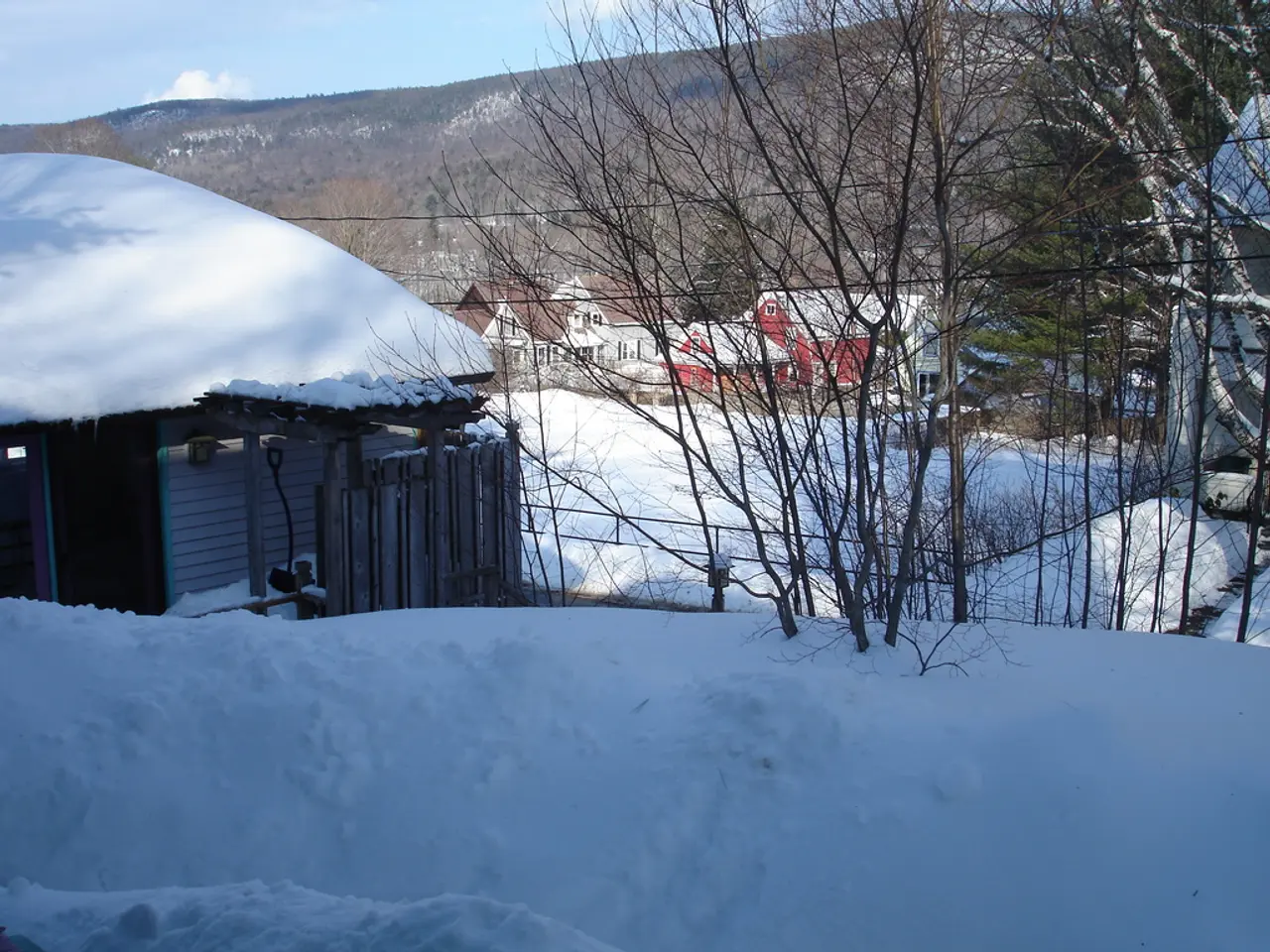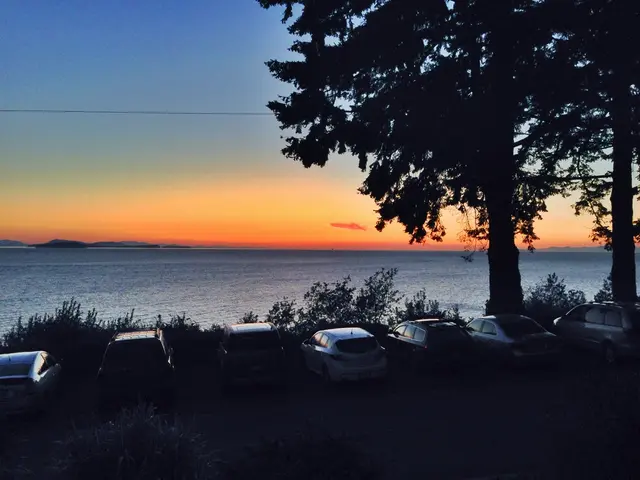Thaw of Permafrost Causing Rockslides in Italy's Dolomites, According to Specialists
In the picturesque Brenta Dolomites in Italy, a series of alarming events have been unfolding due to climate-driven permafrost thaw. The once-stable slopes are now witnessing a surge in rockfalls, forcing the evacuation of hundreds of tourists and the closure of numerous hiking trails due to safety concerns.
The permafrost degradation, primarily in the Brenta Dolomites, is causing significant rockfalls. The process begins when rising temperatures lead to permafrost thaw, causing expansion of fractures and loss of ice that weakens the mountain's structure. This, in turn, results in increased rock collapses and geomorphological instability at peaks like Cima Falkner.
The ice that previously acted as a cementing agent within rock fissures is now disappearing, causing these fractures to grow and rocks to detach more easily. High-resolution images collected using drones show significant expansion of existing fractures on the slopes.
The Marmolada glacier, the highest in the Dolomites and a UNESCO World Heritage site, is melting at a rate of between 7 to 10 centimeters per day. Experts have warned that rising temperatures are reshaping this iconic mountain range. In fact, it has been predicted that the Marmolada glacier could melt away completely by as early as 2040.
Last year, an ice avalanche on the Marmolada glacier resulted in the tragic loss of 11 lives and the injury of 8. This tragic event underscores the urgency of addressing the issue of climate-driven permafrost thaw and its consequences.
The geological service has stated that the entire summit of the Marmolada is affected by an ongoing geomorphological process, likely linked to permafrost degradation. Similar problems are occurring elsewhere, including the South Tyrolean Dolomites, as reported by Volkmar Mair, Director of the local government's Geology Department.
The rockfalls are blamed on rising temperatures and permafrost thawing. If left unchecked, up to 93% of the world's near-surface permafrost could disappear by 2100 without urgent action to curtail global warming. This would have devastating consequences not only for the Brenta Dolomites but for mountain ranges worldwide.
To prevent further glacial melting, it's not just about halting planet-heating emissions but also about cooling the planet. Local authorities are inspecting the slopes of Cima Falkner using helicopters and drones, but the best solution lies in global action to combat climate change.
As Italian radio personality Giuseppe Cruciani described while hiking in the area, "I heard a tremendous boom followed by a series of rockfalls." These booms are becoming all too familiar in the Brenta Dolomites, a once-tranquil paradise now facing a daunting geological transformation.
- The permafrost degradation in the Brenta Dolomites, due to climate change, has been causing an increase in rockfalls, which have posed a threat to the health and wellness of tourists and the environmental-science aspects of hiking trails.
- Concerns over global warming are rising as scientists predict that up to 93% of near-surface permafrost could disappear by 2100, a scenario that could have devastating consequences for health-and-wellness, environmental-science, and the stability of mountain ranges worldwide.
- To mitigate climate change and the ensuing permafrost thaw, it's necessary to address not only the reduction of planet-heating emissions but also to implement strategies that cool the planet, an urgent action required for the preservation of health-and-wellness, the environment, and global scientific understanding of climate change.




